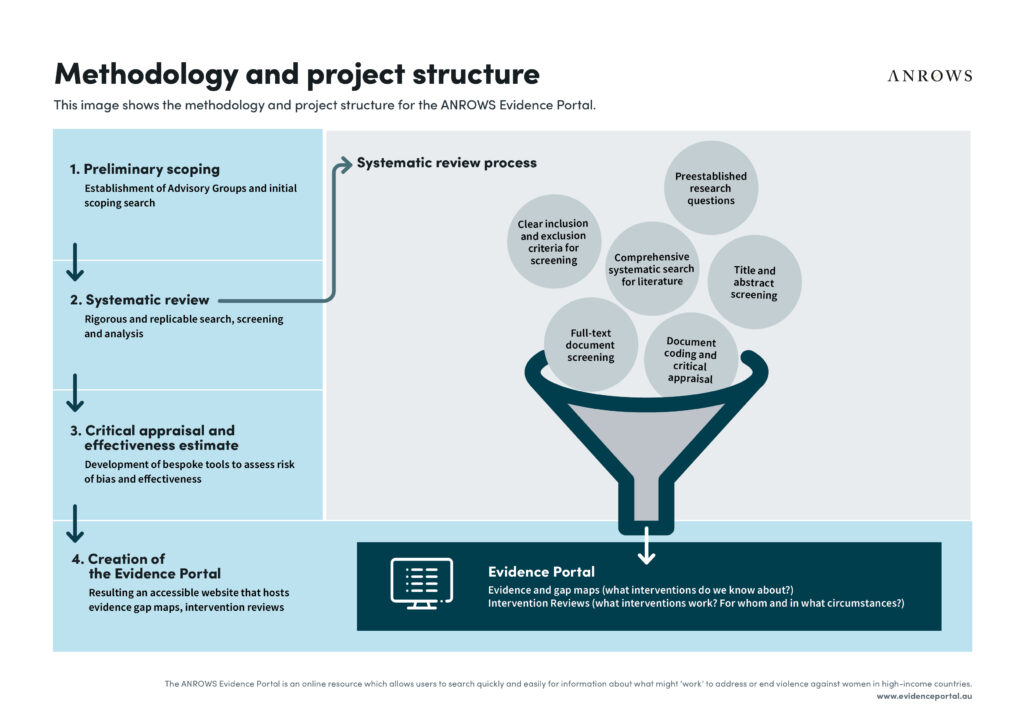Where the EGMs show the quantity and types of existing research, the intervention reviews take the important next step of providing overviews of interventions included in each EGM. These tell the user key information about an intervention, such as its delivery, resourcing, and setting characteristics. The intervention reviews also draw from quantitative impact evaluations to estimate how effective the intervention is in achieving its aims. These effectiveness estimates are based on our Evidence Rating Scale for Quantitative Studies.
Notably, the intervention reviews also draw on the evidence base (including qualitative evaluations), to enable the evidence portal to answer key questions such as:
Users can explore the intervention reviews via our searchable tool, which allows users to filter by type, nature, target or population of an intervention.
Since the Evidence Portal is a living resource, the collection of intervention reviews contained within it will continue to grow and be regularly updated. For further information regarding the intervention reviews, please see our Technical Report..
 Skip to content
Skip to content
